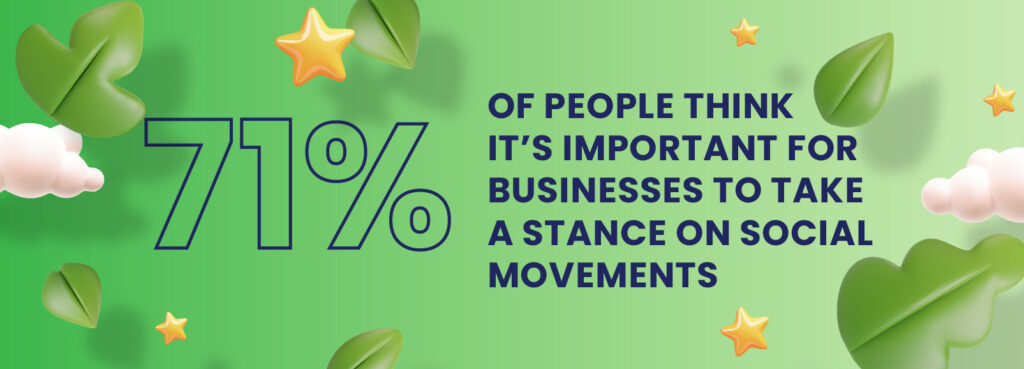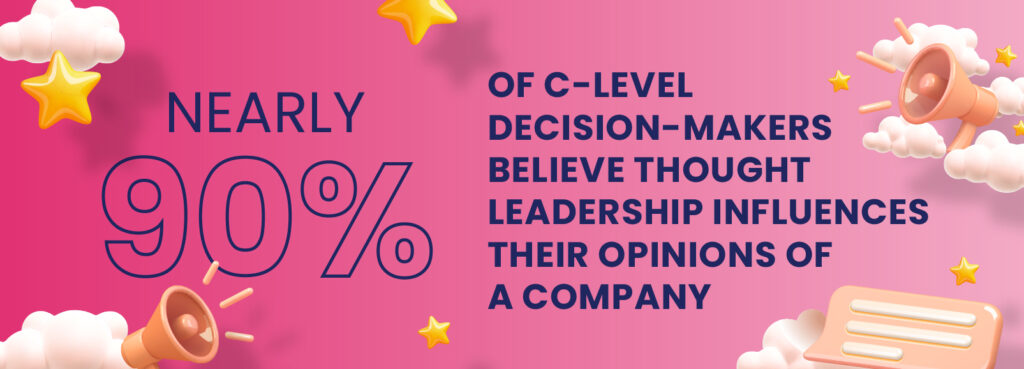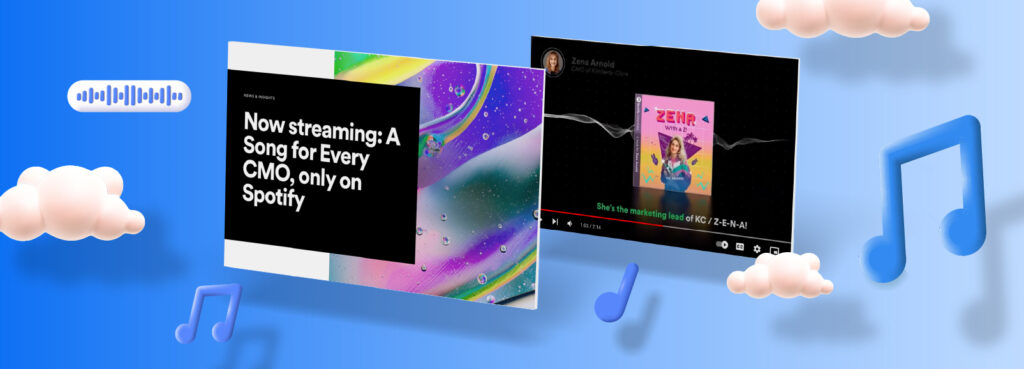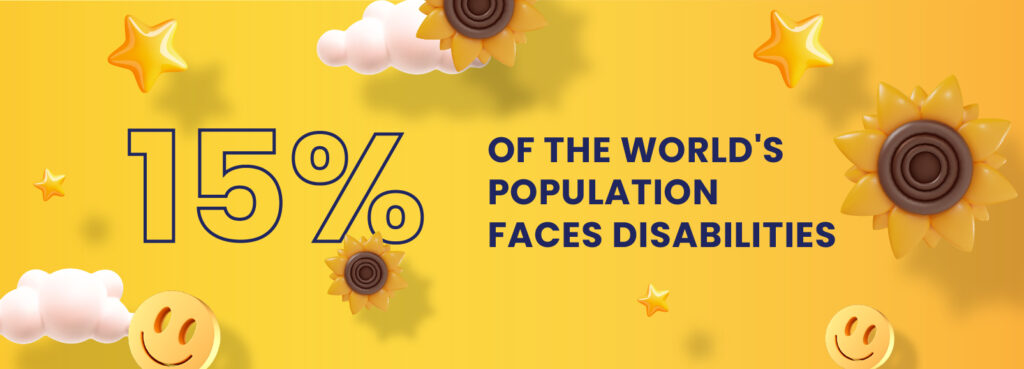At this time of year, there’s countless marketing trend reports around. So we asked our strategists what are the B2B marketing trends that will be *really* important in 2024 – the useful ones that will change our day-to-day working lives. Here’s what they said…
Real ESG driven by greenwashing fatigue
With brands such as Starbucks and Innocent Smoothies1 having been pulled up on their green credentials last year, it’s not surprising that many people are growing increasingly distrustful of any brand making unsubstantiated green claims.
Greenwashing fatigue is fuelling the need for brands to be actively committed to a green agenda. Quite simply, planting trees alone is not enough.
It is predicted that by 2025, 75% of the workforce will be made up of millennials2. This is a demographic that has been shown to be quite prepared to switch brand allegiance if they feel a brand isn’t making a positive contribution to society3.
And what does that mean for B2B?
It seems that this environmentally and socially conscious attitude is naturally carrying through to the B2B buyer, with ESG importance increasing in the decision-making process5.

76% of decision-makers believe companies should do more to communicate their ESG commitments publicly6, leaving many in B2B to consider how exactly to do this. Ultimately, being able to communicate a brand’s ESG position, in a genuine way, is key to building credibility, but this is only possible if a brand is actually active in doing something that will have a positive impact on society — with no activity there is no story.
Properly original content (in style and substance)

We’re not about to say thought leadership is dead – it’s still a powerful way to engage with B2B buyers, with 53% of B2B marketers saying they would increase their investment in thought leadership content in 20248. But, when you consider only 17% of decision-makers9 would call the content they consume “very good” or “excellent”, it’s clear we can do better.
So what style is in?
E-books and whitepapers are still the go-to for B2B marketers. But people want more: they want content that engages them through storytelling, provides useful solutions, and creates entertaining experiences. So brands are increasingly exploring alternative content formats as a way to do just this. For example, augmented reality (AR) and virtual reality (VR) are both being ulitised to create immersive and interactive experiences.
Video is one of the three most popular B2B content types/formats at 84%, up from 75% last year10. And with an estimated 75% of people11 watching short-form video content on their phones, it still represents an under-utilised opportunity for B2B brands.
The substance
It used to take months to gather the data and insights needed to create original content. Not anymore. Increasingly we’re seeing the use of research tools to create meaningful content, faster. Take Wynter or Pollfish, for example, which enable you to build surveys for small pulse tests and deliver insight at speed.
B2B personalisation that’s as good as B2C
Personalisation in B2B sales can lead to 1.4x revenue growth12, so it’s clear the more a brand can personalise the B2B buyer journey, the greater the rewards are.
But the journey isn’t linear. And 95% of B2B customers are not in the market for your services right now. That means two things for personalisation:
a. A trigger strategy
Marketing is shifting from a linear outbound approach to a series of rules and trigger-based scenarios to build better personalisation and relevance, just like we experience in our B2C lives. For example, web visitors to key pages, webinar participants and content downloads are all intent triggers that can prompt a relevant, personalised marketing response.
b. Getting creative
Did you see the Sainsbury’s #checkYouOut campaign that told every Nectar card member their shopping habits, like being the number 1 buyer of Celebrations chocolates in London? Well, B2B personalisation is finally upping its game.
For example, to grow Spotify Advertising, Spotify tailored songs and music to individual CMO’s’ tastes and achievements13.

Or take PartnerStack as another example. Their Demand Generation And Sales teams worked together on a hyper-personalised ABM video campaign, recording video messages for target accounts, in song. You can check that bad boy out here.
Technology for inclusivity
Technology plays a crucial role in dismantling barriers and creating opportunities to empower individuals with their unique needs. For example, 80% of people feel more included in the metaverse than in real life14. And is it any wonder?
It’s not just from the simple ability to create diverse-looking avatars that will help fuel more inclusivity. It’s also reflective of such possibilities as providing control interfaces for those unable to use a conventional keyboard.

We’ve also seen the inclusivity of the metaverse first-hand. Over several weeks, a number of Radishes took VR headsets to Great Ormond Street Hospital to help give patients, including some non-mobile patients, the chance to discover worlds beyond the hospital doors, encouraging movement, play and creativity.
But it’s not just the metaverse that is helping to improve accessibility and inclusivity. Winning the Innovation Grand Prix at the Cannes Lions International Festival of Creativity was MouthPad and their ‘intra-oral’ device that uses machine learning to translate tongue movements on the roof of the user’s mouth into instructions for Bluetooth-connected devices.
AI as an enhancer
AI has featured within almost every one of the above trends, but this would not be a trend article without giving it its own mention.
We believe 2024 is the year in which marketers will use AI day-to-day to enhance what they do; enhancing creativity, knowledge and productivity.
AI’s practical application still has its limitations, but it’s understanding these and working out how it can make your job easier and faster that’s going to really change things. Here are a few AI tools we’ve been playing with lately:
- AskYourPDF and Link Reader plugins summarise long PDFs, websites and video interviews
- Visily quickly mocks up wireframes you’ve sketched out
- Lately learns your brand’s voice and optimises social messages for your audience
- AdCreative.ai creates multiple variants of an ad for different channels
What do you think?
So there are our five trends that we think are going to be important this year. Do you agree? Let us know what you think and drop us a line at info@digitalradish.co.uk.
References
1 Greenwashing examples by food and drink brands 2022-23 | Provenance
2 The Deloitte Millennial Survey
3 The Deloitte Millennial Survey
4 How Corporate Social Responsibility Influences Buying Decisions | Clutch.co
5 Building Brand Integrity Through ESG Reporting
6 Socially Responsible B2B: Why It Matters & Why You Should Brag | DemandScience
7 Content Marketing Vs. Thought Leadership: Seven Things You Need To Know | Forbes
8 2024 B2B Content Marketing Trends [Research] | CMI
9 Content for LinkedIn | GaggleAMP
10 2024 B2B Content Marketing Trends [Research] | CMI
11 How Video Consumption is Changing in 2023 [New Research]
12 Must-Know B2B Personalization Statistics [Current Data] | Gitnux
13 A Song for Every CMO | Spotify Advertising
14 80% of people feel more included in the metaverse than in real life | PR Newswire
15 How is technology contributing to equity in the workplace? | World Economic Forum


 Selbey Anderson Group of agencies
Selbey Anderson Group of agencies